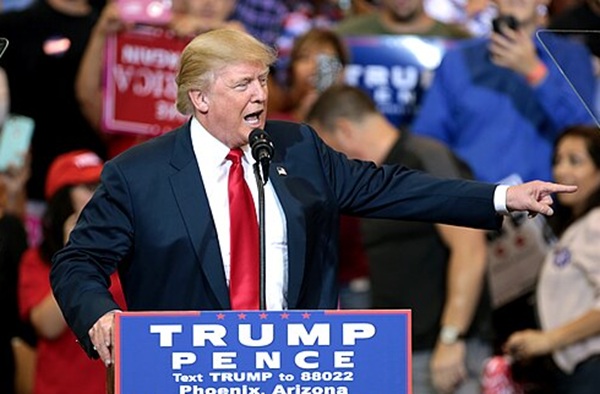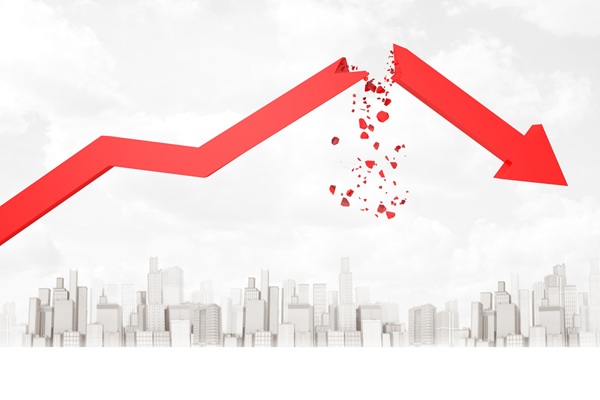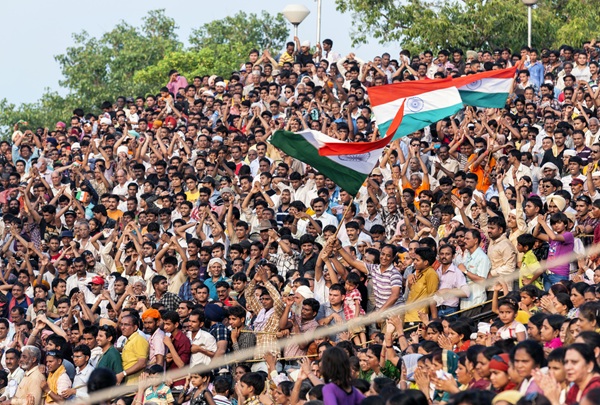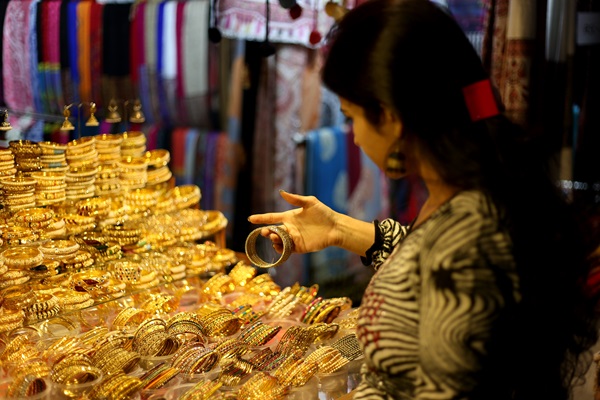.png)

Michael Patra is an economist, a career central banker, and a former RBI Deputy Governor who led monetary policy and helped shape India’s inflation targeting framework.
September 15, 2025 at 3:21 AM IST
“Off with their heads!” would thunder the Queen of Hearts in Lewis Carroll’s 1865 book Alice’s Adventures in Wonderland. This penchant for ordering executions was just a characteristic of her warped personality. Trump’s tariff tirade is so similar to the Queen of Hearts’ tantrums that one feels transported these days to Alice’s Wonderland.
Tariffs and the US have a contentious and chequered history. Alexander Hamilton, the first Secretary of the US Treasury, believed that without such protection, the US would remain dependent on British and European goods and would not be able to develop its own manufacturing base.
The US steel industry prospered under protection from cheaper European steel, and this, in turn, supported the expansion of railroads that became a transformative force for the US economy. The Tariff of 1789, one of the earliest laws passed by the new federal government, was as much about protection as it was about raising revenue. Duties were imposed on a wide range of imported goods and helped to pay down war debts.
By the early 1800s, however, tariffs turned out to be a double-edged sword, sparking political discord. South Carolina, a state heavily reliant on cotton exports, found the high tariffs on foreign goods to be an onerous burden — the “Tariff of Abominations” — and passed an ordinance declaring federal tariffs null and void within its borders, creating a constitutional standoff.
In a stark throwback to the present day, the McKinley Tariff Act of 1890 (named after President William McKinley), which raised tariffs on many imported goods to their highest levels up to that point, also included reciprocity provisions that allowed the government to negotiate trade agreements with other countries and reduce tariffs on certain goods in exchange for similar reductions by other nations.
The Tariff Act of 1930, also known as the Smoot-Hawley Tariff and enacted by President Herbert Hoover, increased tariffs on more than 20,000 imported products. The most immediate impact was swift, negative responses from international trade partners—Canada, Britain, and France, among others, retaliated with their own tariffs, leading to a sharp decline in global trade. This protectionist spiral strained diplomatic relations and, amid the Great Depression, only worsened economic conditions in the US.
For many Americans, the higher prices from tariffs on essential goods like food, clothing, and household items strained family budgets, particularly during a time when economic hardship was already pronounced and pervasive. Eventually, good sense dawned and in the late 20th and early 21st centuries, concerted efforts were made to reduce tariffs. Free trade agreements like the United States-Mexico-Canada Agreement and the establishment of the World Trade Organization reduced trade barriers and helped the global economy grow on the back of global supply chains. Amidst sluggish consumer spending, hiring slowdown and a struggling housing market, it remains to be seen what toll the current tariffs will take on the US; time will tell if history repeats itself.
On the 50% tariffs imposed on India, arguably the highest in Asia, a variety of emotions have been expressed in the public domain, ranging from the vitriolic to the dismissive to the guarded wait-and-watch, and the placative. What do these tariffs really mean for India?
India runs a merchandise trade surplus with the US of a little over $40 billion—around 1% of our GDP in 2024-25. As The Economist points out, India, like Indonesia and Malaysia, relies less on Uncle Sam, who attracts less than a fifth of our exports. Let us assume that up to two-thirds of India’s exports to the US get affected, as a leading financial daily estimates — around 14% of India’s total exports.
Even this may be overstating the impact because pharmaceuticals, electronics, and energy, comprising about 34% of India’s total exports to the US, are exempted. In fact, adjusted for exempted categories, the effective tariff rate works out to only 21%. Taking into account the front-loading of exports to the US ahead of the tariffs, on a ‘do-nothing’ basis our exports to the US may fall by around $30 billion from a year ago, applying estimated price sensitivities of India’s exports to the US. This would balance India’s merchandise trade with the US, which must be the purpose of the tariff.
On a subtly activist basis, however, India may counter by aggressively diversifying away from the US market to the EU, MENA and ASEAN regions. Already, EU markets for India’s seafood exports are widening. Free trade agreements with Latin America are being fast-forwarded. Some re-routing of India’s exports to the US is also inevitable to muffle the tariffs’ sting: would American consumers really mind if the label read ‘Made in Bangladesh’? A rose, as Shakespeare would have said, by any other name would smell as sweet.
A policy counter is also building up: if GST 2.0 is already here to reduce input costs for exporters, can a direct export supportive package be far behind? The focus should be on the most exposed and labour-intensive sectors—gems and jewellery; textiles; apparel; electronics assembly; and generic drugs being reviewed under a separate investigation. The savings from not diversifying from Russian oil imports, estimated at about $2.5 billion, can be used for the retaliation strategy, treating Trump’s tariffs as a one-time shock.
According to a leading financial daily, imports of crude oil from Russia rose in August by 5.6% from July levels, with Russia’s share increasing to 37% from 33%. According to the Wall Street Journal, Russia has cut the price of Urals crude, and a $7 difference per barrel has emerged relative to an equivalent grade from Oman. Hence, some Indian buyers, who may have been deterred by the punitive tariff announcement, are now resuming purchases at least one dollar per barrel cheaper than before the announcement. They are drawing strength from policy assurances that Russian oil purchases will continue. WSJ expects flows to normalise by October. As it points out, the Trump administration’s energy policies appear conflicted. Until recently, it suited the US for India to buy Russian crude as it kept energy prices in check. The abrupt volte face looks more like a tactic to force concessions in trade agreement talks. An unintended consequence is that crude traded in the black market, which accounts for 15% of the world’s supply due to sanctions, may become more enticing.
What has the US got at stake?
Indian students in the US spend about $25 billion a year. Many of them are already rethinking or relocating. American companies like Amazon, Google, Meta and Microsoft rake in up to $20 billion in sales to India’s booming digital market—succulent targets for non-tariffs. US banks and financial firms earn up to $15 billion in India, and US global capability centres make between $15 billion-$20 billion every year. Even leaving out the small change from patents, licensing, and fees earned by pharmaceutical, auto and streaming services companies, the US stands to lose up to $45 billion in an all-out trade war, an option which India should keep on its radar.
External Account
We live in a world of widening global imbalances. The world’s current account balances are diverging significantly. Illustratively, the deficit of the US has expanded, while the surpluses of China, the EU, Japan and Korea have increased, both well beyond levels warranted by IMF-determined ‘desired’ norms. This centrifugal shift is being driven by domestic drivers—AI-driven investment in the US; weak investment demand in the surplus countries.
Against this backdrop, the IMF judges that India’s external position is moderately stronger than warranted by its fundamentals. With weakening external demand, geoeconomic fragmentation and volatile financial conditions and international commodity prices offset by the strength of fundamentals, buoyant service exports and declining crude prices, India’s current account balance is projected to improve further relative to the IMF’s norm.
India’s net international investment position, which covers all external assets and liabilities, has improved. Net international liabilities fell to just -8.7% of GDP by March 2025 from -18.2% in March 2014, and the position is projected to improve further over the medium term. This has, in fact, emboldened the IMF to recommend that India ease imports just so that the current account deficit can expand to 2% of GDP, its desirable norm.
This is clearly a formidable position from which India can address the Queen of Hearts tariffs.
In July, The Economist published an update of its Big Mac index, which is a purchasing power parity assessment of the performance of nations that is based on the price of the Big Mac in various countries. By the Big Mac index, India’s purchasing power is substantially higher than what market exchange rate assessment would suggest or even the 40-currency trade weighted real effective exchange rate; and this is borne out by the suite of equilibrium exchange rates developed by RBI economists.
Alice, on hearing the Queen’s outburst for the first time, boxed her ears! This punishment will inevitably be delivered by financial markets. India is pulling its punches, wisely and sagaciously for now. When it is time, à la Muhammad Ali, India must float like a butterfly and sting like a bee.




